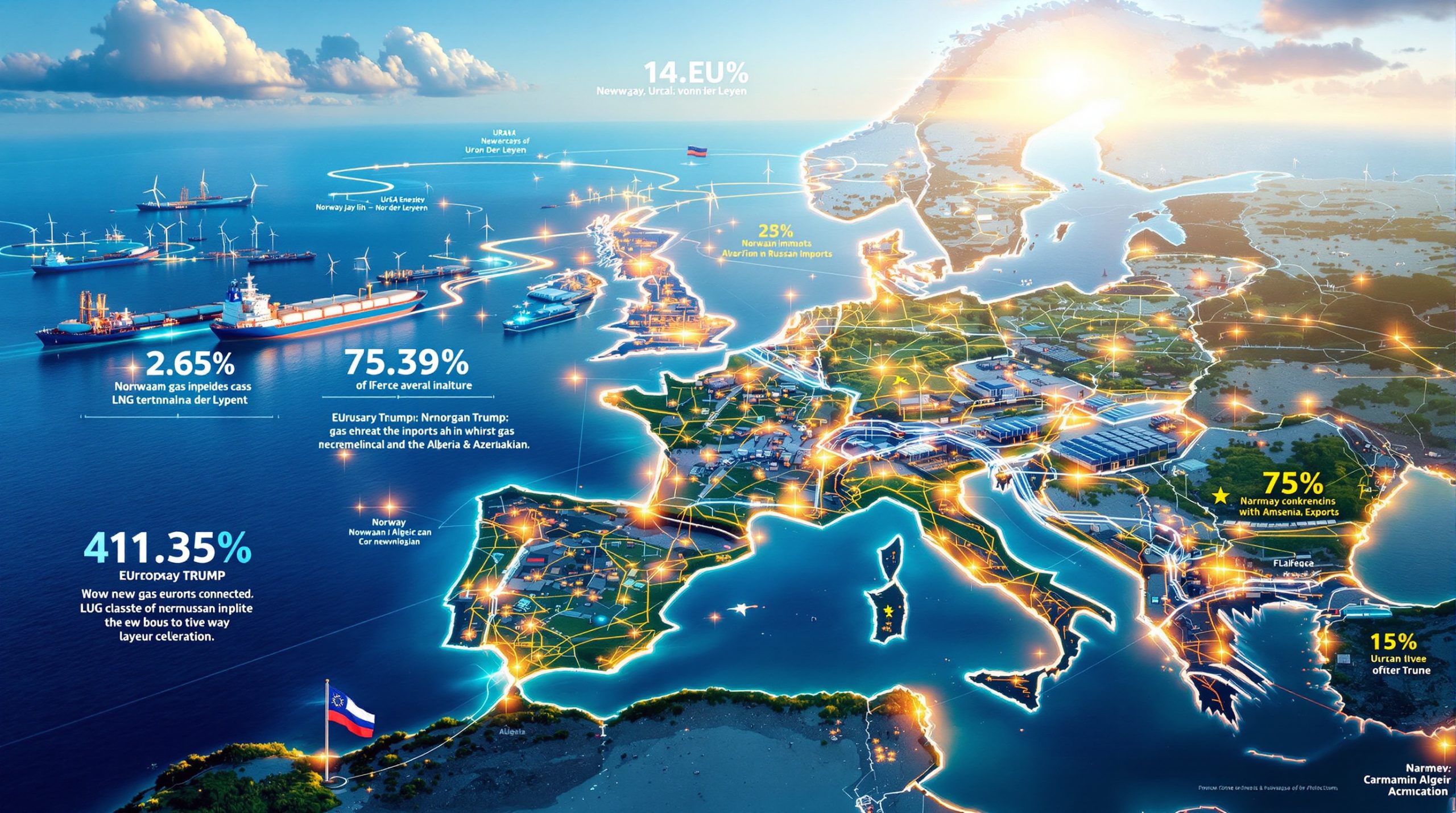The Impact of Tariffs on Global Trade
Global trade faces unprecedented disruptions as tariffs reshape economic relationships, supply chains, and inflation dynamics. Key developments include a sharp decline in container shipments at U.S. ports, capital repatriation to European markets, and central banks navigating divergent monetary policies. The European Central Bank (ECB) has cut rates to 2.25% amid subdued inflation, while the U.S. Federal Reserve resists explicit "stagflation" terminology despite rising price pressures. Gold market analysis shows prices have surged past $3,000 per ounce, reflecting safe-haven demand, and technology stocks face volatility amid geopolitical decoupling efforts.
How Are Tariffs Affecting International Commerce?
Tariffs have introduced significant uncertainty, disrupting long-established trade patterns and corporate planning.
The Current State of Global Trade
Global trade activity is "grinding to a halt," with container bookings at U.S. ports declining markedly post-tariff announcements. Companies engaged in front-loading shipments ahead of tariff implementations, but this activity has since stalled, leaving supply chains fragmented. Over 45% of capital that flowed into U.S. markets has repatriated to Europe, particularly into Swedish and German infrastructure and defense sectors. This reallocation underscores a broader shift toward regional economic security.
Businesses are increasingly reluctant to issue forward guidance, with 60% of S&P 500 firms withholding earnings projections due to Trump's trade impact. The U.S.-China trade standoff remains entrenched, with neither side showing willingness to de-escalate.
What's Happening to the European Economy?
Europe faces structural challenges compounded by energy insecurity and industrial transition pressures.
Economic Indicators in Europe
German industrial production has contracted for three consecutive quarters, driven by energy costs 35% above the EU average. The automotive sector struggles with slow electric vehicle (EV) adoption, with EV sales growth dropping to 12% year-over-year in Q1 2025 from 28% in 2023. The ECB's sixth consecutive rate cut to 2.25% reflects concerns over stagnant growth, though the euro's 8% appreciation against the dollar since January 2025 has provided limited relief.
Capital Flows and Investment Patterns
Approximately €450 billion of the €1 trillion that left Europe for U.S. markets between 2020–2024 has returned, primarily targeting defense and renewable energy sectors. Sweden's OMX Index has outperformed the Euro Stoxx 50 by 14% year-to-date, driven by NATO-aligned defense spending.
How Do Tariffs Impact Inflation?
Tariffs exert dual pressures, elevating consumer prices while compressing corporate margins.
The Inflationary Argument
U.S. tariffs on $300 billion of Chinese goods could add 0.7–1.2 percentage points to core inflation, potentially pushing the Fed's preferred PCE metric to 4% by late 2025. Firms absorbing 40–60% of tariff costs face margin erosion, with S&P 500 net profit margins declining to 9.8% in Q1 2025 from 11.2% a year prior.
Potential for Stagflation
The U.S. economy grew at a 1.4% annualized rate in Q1 2025 while core inflation held at 3.9%, nearing the Fed's unofficial stagflation threshold. Despite this, Chair Jerome Powell avoids the term, emphasizing labor market resilience.
What's Happening to Global Supply Chains?
Tariffs are accelerating supply chain regionalization, with profound implications for manufacturing and logistics.
Disruptions to Trade Flows
U.S. West Coast port volumes fell 18% month-over-month post-tariff announcement, while Rotterdam's inbound Asian shipments dropped 22%. Maritime routing data shows a 30% increase in "nearshoring" voyages under 1,000 nautical miles since January 2025.
Business Planning Challenges
A Bloomberg survey of 500 CFOs revealed 73% have delayed capital expenditures exceeding $50 million due to tariff uncertainty. The U.S.-China deadlock shows no signs of resolution, with both administrations prioritizing domestic manufacturing over compromise.
How Are Central Banks Responding?
Monetary authorities face divergent challenges, complicating global policy coordination.
Federal Reserve Approach
The Fed's "wait-and-see" posture reflects tightened financial conditions, with the Bloomberg U.S. Financial Conditions Index falling 15% since tariffs were announced. Political pressure on Chair Powell intensifies, with proposals to audit Fed balance sheets gaining congressional traction.
European Central Bank Actions
The ECB's rate cuts contrast with Fed inertia, exploiting Europe's 2.1% core inflation rate versus 3.9% in the U.S. A stronger euro has muted import inflation, shielding the Eurozone from energy price volatility.
Why Is Gold Becoming More Attractive?
Gold's rally reflects systemic distrust in fiat currencies and geopolitical hedging.
Central Bank Purchasing Patterns
Central banks added 1,250 metric tons of gold in 2024, led by China (450 tons), India (210 tons), and Turkey (180 tons). This trend began post-2022, when Western nations froze $300 billion of Russian reserves.
Investment Implications
Gold mining equities (GDX) have surged 45% year-to-date, doubling gold's 22% gain, as all-in sustaining costs stabilize at $1,250/ounce. The NASDAQ's 14% decline highlights rotation into hard assets.
What's Happening with Technology Stocks?
Tech faces valuation resets and geopolitical fragmentation.
Market Correction Factors
The GDX/NDX ratio has reversed from 0.15 in 2023 to 0.27 in 2025, signaling investor preference for tangible assets. TSMC's Q1 revenue beat estimates by 4%, driven by AI chip demand, yet the sector remains 30% below 2023 peaks.
European Technology Strategy
EU nations have committed €20 billion to build independent cloud infrastructure by 2030, reducing reliance on AWS and Azure. The Gaia-X initiative now hosts 450 petabytes of EU data, doubling since 2024.
What Investment Strategies Make Sense in This Environment?
Resource security and income-focused equities are prioritized amid volatility.
Recommended Focus Areas
European dividend stocks yield 4.8% on average, outperforming U.S. counterparts by 120 basis points. The EU Critical Raw Materials Act has spurred €15 billion in mining investments across Scandinavia and the Balkans.
Resource Security Trends
Deep-sea mining licenses issued in the Pacific grew 300% year-over-year, while U.S. interest in Greenland's rare earth deposits signals resource nationalism. Investors seeking stability should understand geopolitical shift strategies and develop market strategies for success during periods of trade tension.
FAQ: Understanding Tariffs and Global Trade
What are the primary effects of tariffs on international trade?
Tariffs disrupt supply chains, elevate consumer prices, and spur retaliatory measures, reducing global trade volumes by an estimated 3–5% annually, according to recent WTO findings.
How do tariffs impact inflation?
Direct tariff effects add 0.5–1.0% to inflation, though secondary effects via supply chain bottlenecks can double this impact.
Why are central banks taking different approaches to monetary policy?
Divergent inflation trajectories (2.1% in Eurozone vs. 3.9% in U.S.) allow ECB dovishness versus Fed restraint.
What explains gold's recent price surge?
Central bank diversification (35% of 2024 purchases) and retail investor inflows ($10 billion monthly) drove gold prices above $3,000, representing a fundamental shift in reserve asset preferences globally. For a comprehensive understanding of commodities market insights, investors should analyze both physical and derivatives markets.
Disclaimer: This article contains analysis and speculation based on current economic conditions. Economic forecasts are inherently uncertain and subject to change as new information emerges. Global trade updates from authoritative sources should be regularly consulted. Readers should consult with financial professionals before making investment decisions based on this content.
Are You Prepared for the Next Market-Moving Discovery?
Identify potentially lucrative opportunities before the wider market by accessing real-time alerts on significant ASX mineral discoveries, powered by Discovery Alert's proprietary Discovery IQ model. Explore why major mineral discoveries have historically delivered substantial returns by visiting the Discovery Alert discoveries page and start your 30-day free trial today.




